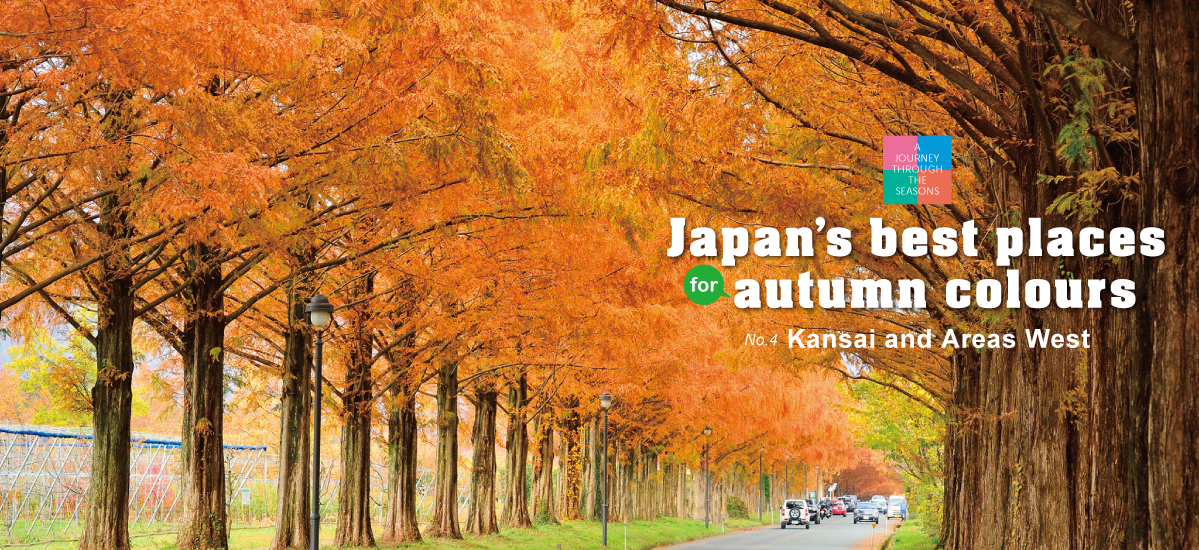
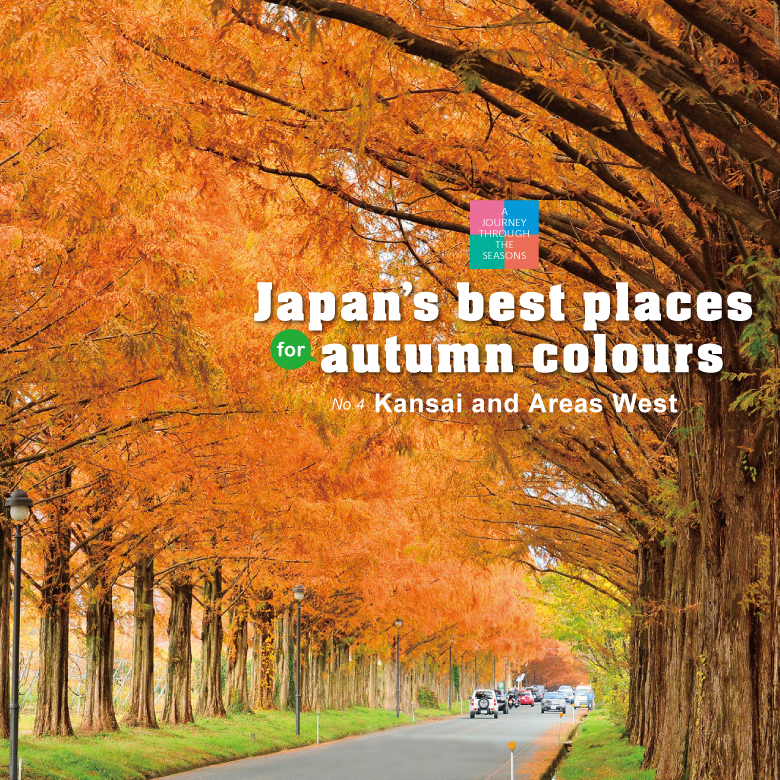
Every year in autumn, from the north to the south and from the mountains to the plains, a brightly coloured tapestry of reds, oranges and yellows ripples across the islands of Japan. All over the country, people are out and about making the most of the autumn scenery.
Text : Sasaki Takashi / English Version : Judy Evans
Keyword : Ōita Prefecture / Autumn Scenery / Driving / Shiga Prefecture / Tottori Prefecture / Ehime Prefecture / Mt Daisen
A Golden Avenue of Dawn Redwoods – Takashima City, Shiga Prefecture (Honshū)
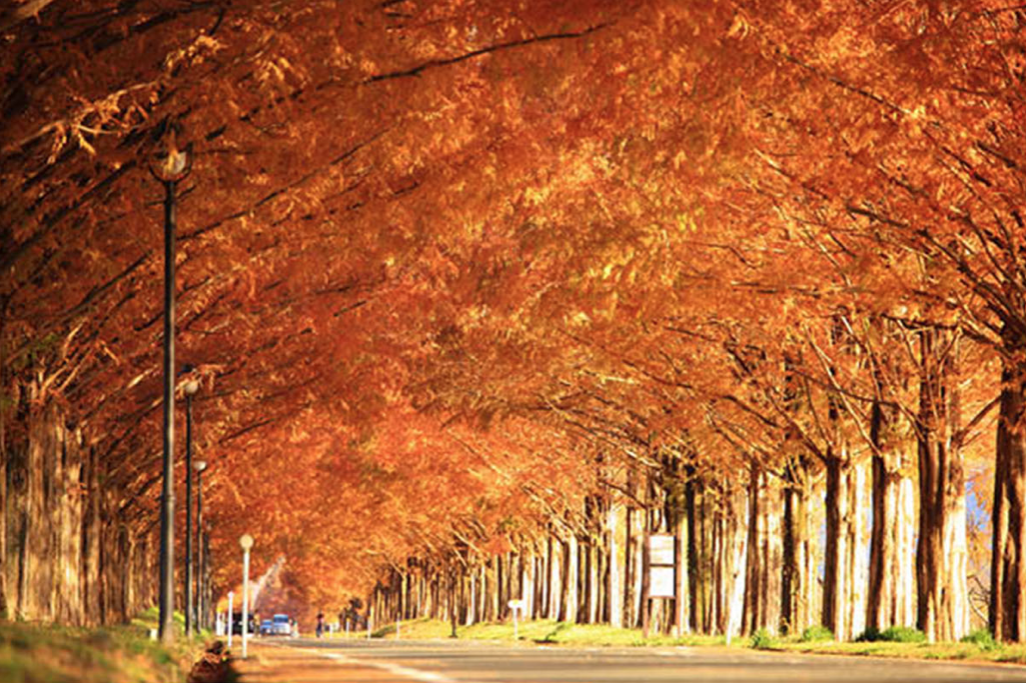

Driving through a tunnel of brilliant golds and deep oranges
The leaves of the dawn redwood, a deciduous conifer, change in autumn to brilliant shades of bright yellow, then deep orange, before falling from the tree. The giant trees grow to over 30 metres in height, making this dawn redwood-lined avenue on the western side of Lake Biwa a truly remarkable sight. Some 500 dawn redwoods line both sides of this 2.4 kilometre-long avenue, their magnificent branches arching over the road to form a golden tunnel.
◆ Best time for autumn colours: early to late November.
Access guide
◎ By bus: About 6 minutes from JR Makino Station aboard the Town Bus bound for Makino Kōgen.
◎ By car: About 60 km via Route 161 from Kyōto-higashi Interchange on the Meishin Expressway.
Mt Daisen and Kagikake Tōge – Daisen-chō and Kōfu-chō, Tottori Prefecture (Honshū)


Mt Daisen amid a rainbow of autumn colours
Daisen is a mountain of many faces, elegantly conical from the west, but long and jagged when viewed from the north or south. This famous mountain was once revered as an object of worship by followers of Japan’s Sangaku Shinkō (mountain creed). In the foothills, vast expanses of unspoilt virgin forest remain undisturbed. Beech, maple and Japanese rowan trees display brilliant multi-coloured hues in autumn. There are numerous excellent vantage points along the Daisen Loop road that circles the mountain, such as Kagikake Tōge pass that, that offers views of the south face.
◆ Best time for autumn colours: late October to mid-November.
Access guide
◎By car: About 23 km or 50 minutes from the Yonago Expressway Hiruzen Interchange, via the Hiruzen-Daisen Skyline route, or via Prefectural Route 45. Or, about 12 km or 25 minutes from Yonago Expressway Mizokuchi Interchange, via Route 45.
Ishizuchi Skyline – Kumakōgen-chō, Ehime Prefecture (Shikoku)
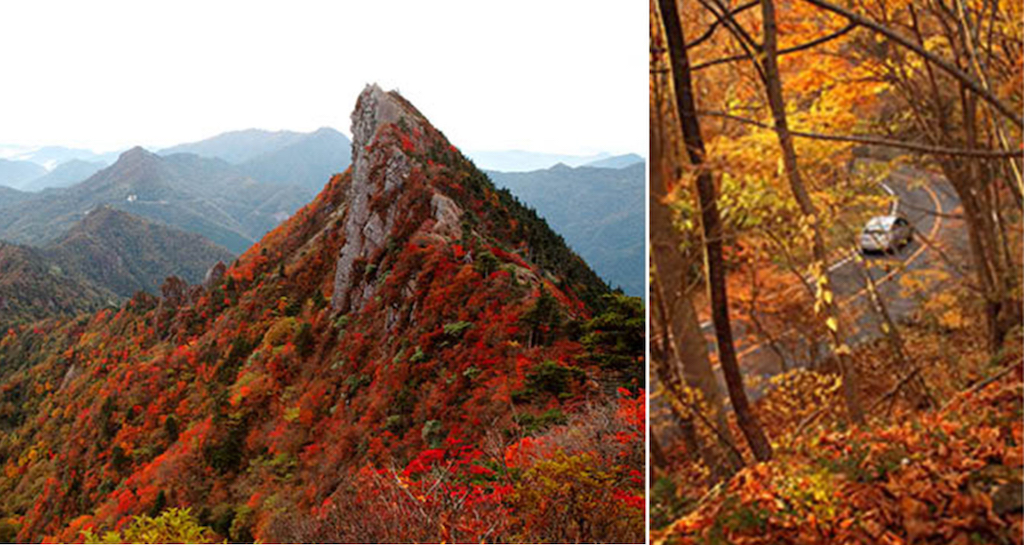
Views to the Seto Inland Sea and the mountains of Honshū and Kyūshū
Mt Ishizuchi (1,982 m) is the highest mountain in Western Japan. Not only do the autumn colours here begin just that bit sooner than down on the plains, but the top of the Ishizuchi Skyline drive offers magnificent panoramic views. On a clear day, you can see all the way to the Seto Inland Sea and even as far away as the mountains of Honshū and Kyūshū.
◆ Best time for autumn colours: Early to mid-October
Access guide
◎By bus: Take the JR bus from JR Matsuyama Station and get off at Kuma Chūgakkō-mae bus stop. Change here to the Iyotetsu Bus (no service on weekdays). The ride to Ishizuchi Tsuchigoya bus stop at the top of the Ishizuchi Skyline takes around 3 hours.
◎By car: The turn-off for the Ishizuchi Skyline route is about 48 km along Route 33, or one and a half hours from Matsuyama Interchange on the Matsuyama Expressway.
Kokonoe Yume Suspension Bridge – Kokonoe-chō, Oita Prefecture (Kyūshū)
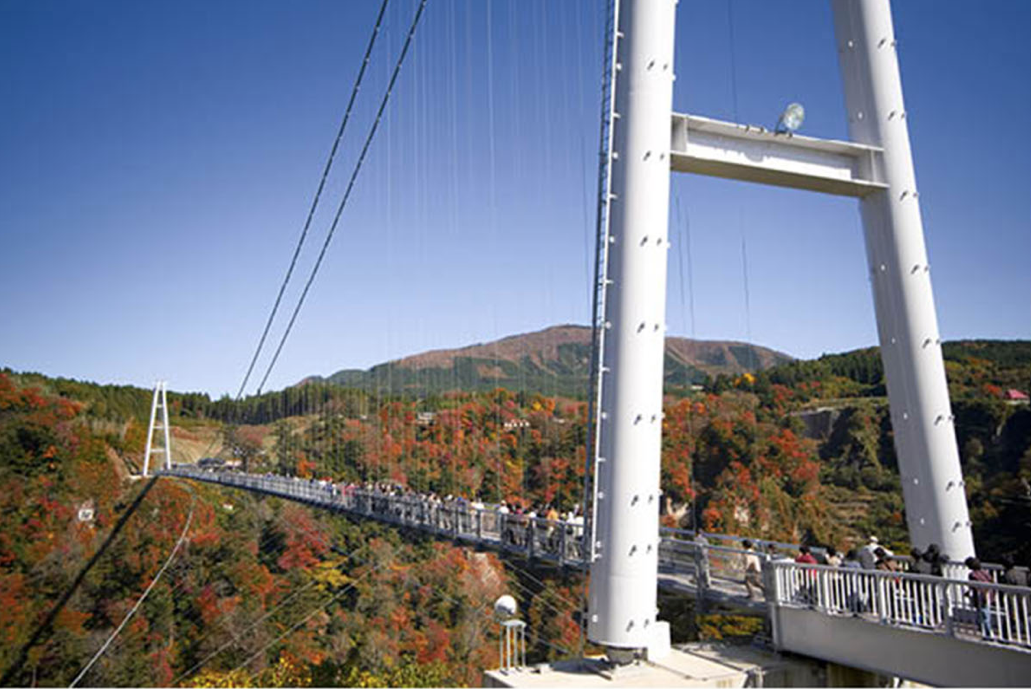

Autumn views of the Chikugo River valley from Japan’s largest pedestrian suspension bridge
The 390 metre-long Kokonoe Yume Suspension Bridge opened in 2006 and is the largest pedestrian suspension bridge in Japan. Crossing the bridge is like walking on air, with the stunning autumn colours of the gorge laid out below. Admission is 500 yen. The bridge is open from 08:30 to 17:00, with ticket sales until 16:30. Times do vary according to the seasons though, and the bridge may be closed in adverse weather conditions. (Enquiries to the Kokonoe Yume Ōtsurihashi management centre.)
◆ Best time for autumn colours: late October to mid-November
Access guide
◎By bus: About 25 minutes by regular bus from JR Bungo-Nakamura Station. Get off at Ōtsurihashi Nakamura-guchi bus stop.
◎By car: About 22 km or 40 minutes from the Ōita Expressway Yufuin Interchange via the Yamanami Highway (Prefectural Route 11).
Kikuchi Gorge – Kikuchi City, Kumamoto Prefecture (Kyūshū)
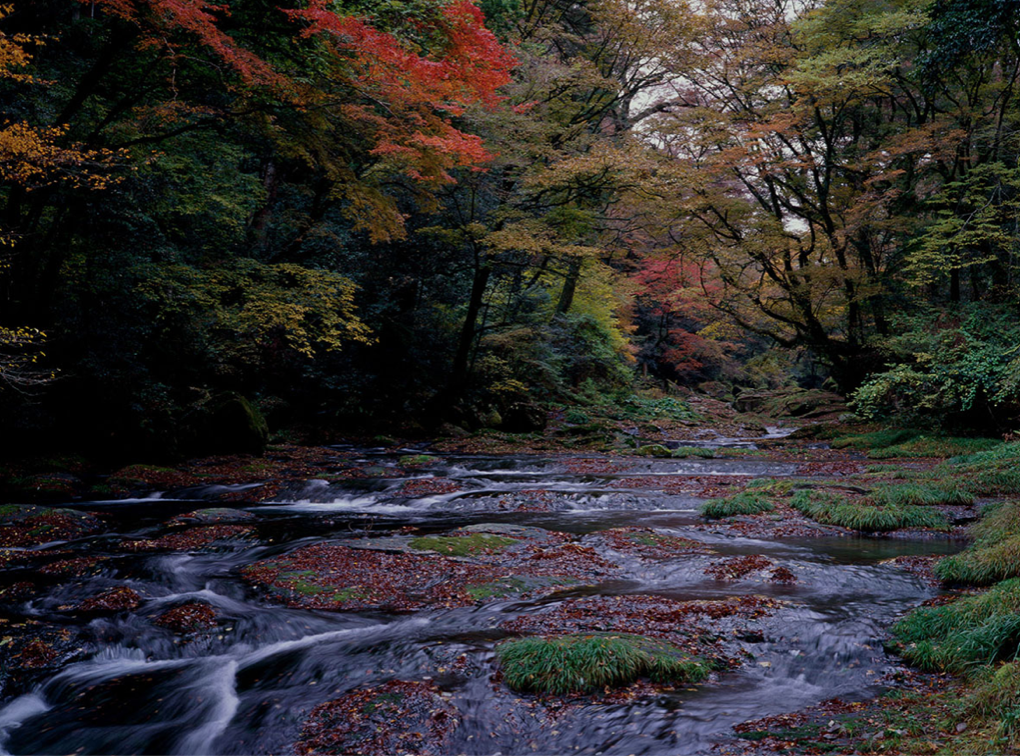
A mountain stream surrounded by autumn finery
Pristine water from the peaks that comprise the old Aso crater rim flows through Kikuchi Gorge. Because of its clear waters and unspoilt natural beauty, Kikuchi Gorge is often lauded as the ‘most perfect’ valley in all Japan. The landscape here is rich in variety, with waterfalls, rapids and deep, still pools, not to mention the brilliant autumn foliage of maples, zelkova and shiraki(Sapium japonicum).
◆Best time for autumn colours: late October to mid-November.
Access guide
◎By taxi: Ainori (shared) Taxi service runs from Kikuchi Onsen on weekends and public holidays (reservations required https://www.city.kikuchi.lg.jp/kankou/en/aview/140/307.html).
◎By car: About 28 km or 1 hour from the Kyūshū Expressway Ueki Interchange via Route 387, or via the Kikuchi-Aso Skyline route.








